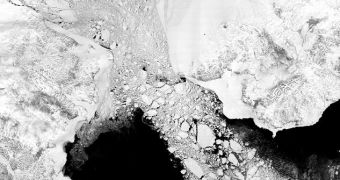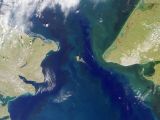A new scientific investigation of the Bering Strait – connecting Russia and North America – has confirmed the long-held belief that even relatively small geographical features can have a considerable influence on global weather patterns. For the past 100,000 years, the feature has played an important role in all major ice ages, whose intensities depended in part on the water levels in the North Pacific sea. The new investigation was funded by the US National Science Foundation (NSF) and carried out by scientists at the National Center for Atmospheric Research (NCAR) in Boulder, Colorado.
The international team of specialists that performed the research found out that the Strait directly affected the amount of heat and salinity that both the Atlantic and Pacific Oceans received. This was done through the periodical opening and closing of the Strait, which was largely due to fluctuating sea levels. The most affected landmasses were Greenland and North America. Overall, in these areas, the mean temperatures alternated frequently between relatively warm and very cold.
This favored the creation, or collapse, of ice sheets, which constantly grew and were destroyed, as the temperatures varied. Direct consequences of these events were fluctuations in the global sea levels, brought about as the land glaciers melted. The team emphasizes the fact that the new research shows just how important seemingly simple geographical features are. They also reveal that numerous small climate changes that take place in the world today, which scientists are overlooking because they are “too small,” may actually be exerting their influence on the global climate.
“The global climate is sensitive to impacts that may seem minor. Even small processes, if they are in the right location, can amplify changes in climate around the world,” the lead scientist on the new investigation, NCAR expert Aixue Hu, explains. Details of the investigation appear in the latest issue of the respected scientific journal Nature Geoscience. Funding money came from the NSF and the US Department of Energy. The work was conducted on supercomputers, at a level of detail that was impossible to achieve just a few years ago.
“This kind of study is critical for teasing out the nuances of our climate system. If we can improve our understanding of the forces that affected climate in the past, we can better anticipate how our climate may change in the future,” NCAR scientist Gerald Meehl, who has also been one of the coauthors of the new journal entry, concludes.

 14 DAY TRIAL //
14 DAY TRIAL // 
